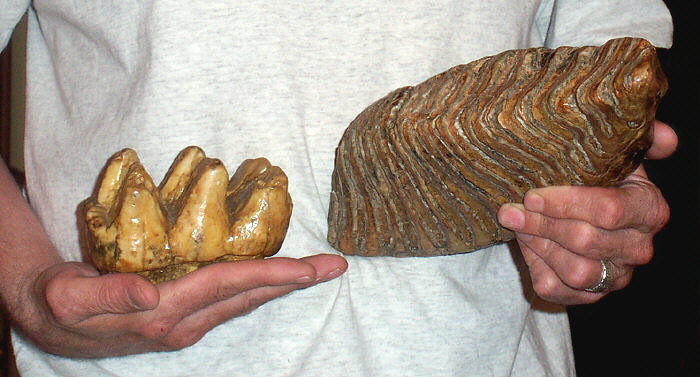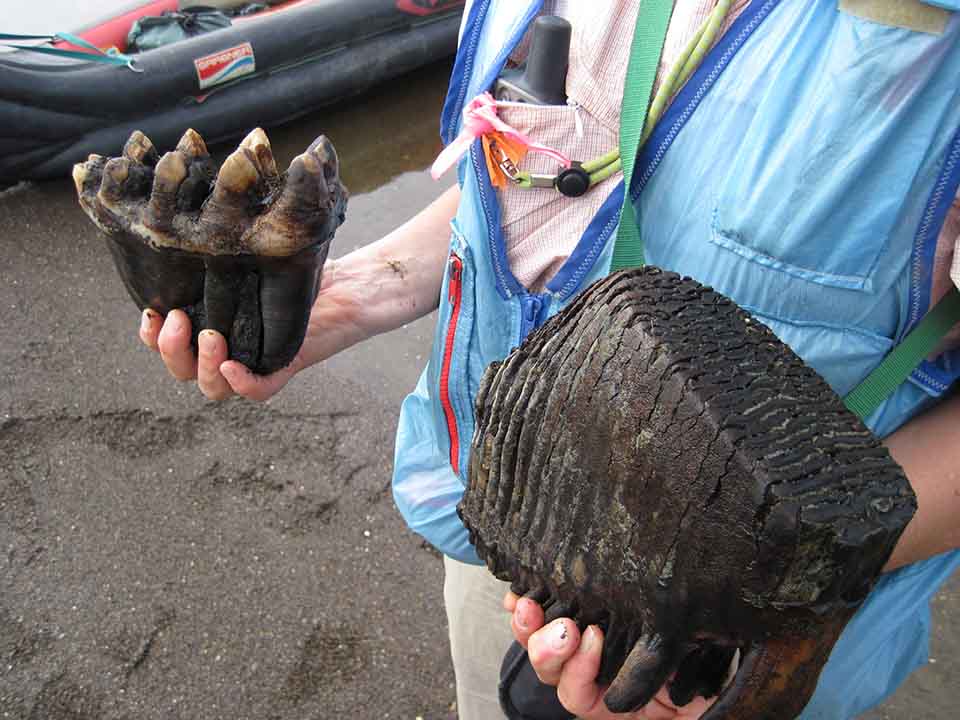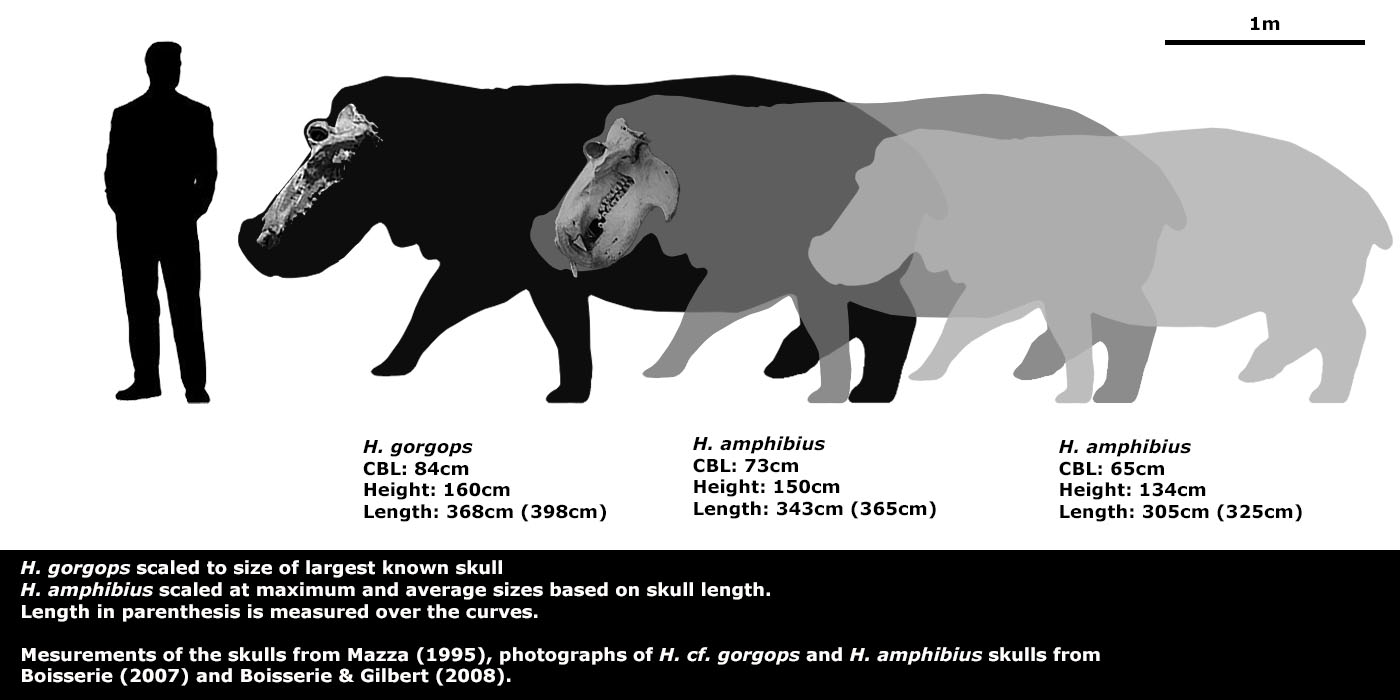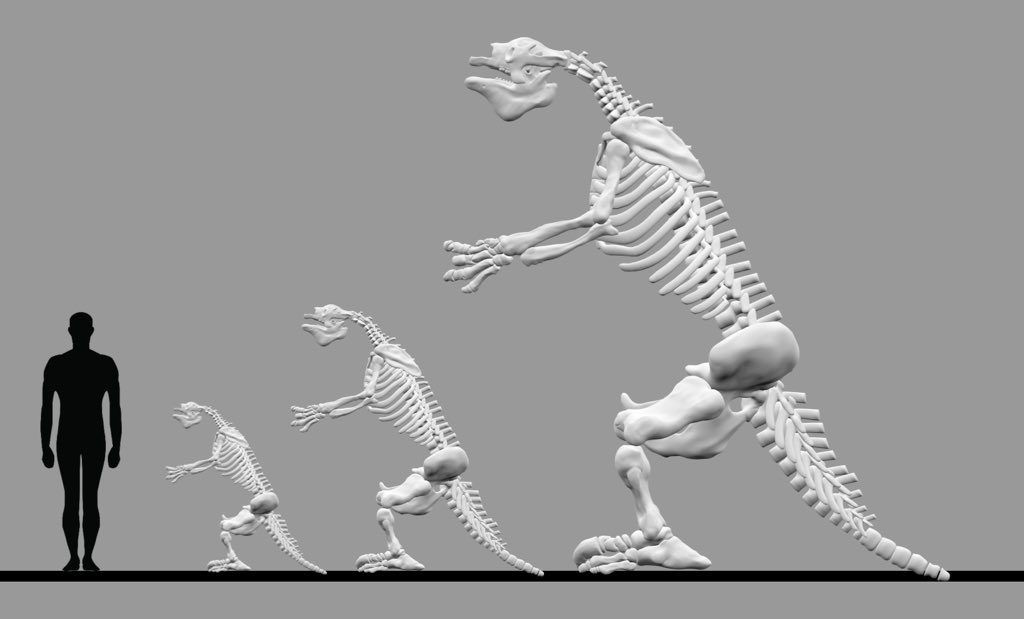|
|
Post by Ceratodromeus on Aug 19, 2020 7:32:33 GMT 5
|
|
|
|
Post by Infinity Blade on Aug 20, 2020 0:01:23 GMT 5
Barosaurus specimens. AMNH 6341 (black), BYU 20815 (blue), and BYU 9024 (dark blue). The last is figured as a C9, which Mike Taylor and Matt Wedel consider to be the most likely serial position (although it's possible that this is wrong). Oh, and Allosaurus fragilis in green and Saurophaganax maximus in grey.  © @ fadeno->
|
|
|
|
Post by Infinity Blade on Aug 26, 2020 9:35:42 GMT 5
Mastodon molar (left) vs mammoth molar (right).  Image source-> Image source->This image below is hardly a useful size comparison given the perspective of the shot, I just really wanted to show off this picture, which also shows the differences between mammoth and mastodon teeth.  Image source-> Image source-> |
|
|
|
Post by Infinity Blade on Sept 7, 2020 4:16:50 GMT 5
 Figure 4. Male (a) and female (b) B. antiquus skulls; male (c) and female (d) 6,500-year-old intermediate type bison skulls; male (e) and female (f) Bison bison skulls. From Frison (1998)->. Bison antiquus skull and B. bison skull. Image source-> |
|
|
|
Post by Infinity Blade on Sept 19, 2020 9:42:30 GMT 5
|
|
|
|
Post by Infinity Blade on Sept 27, 2020 10:04:48 GMT 5
The different hyena species. © @ DeviantArt user bigfancat->.  |
|
|
|
Post by Infinity Blade on Oct 8, 2020 6:11:15 GMT 5
Only top view, but a manatee and what I'm pretty sure is an American crocodile next to each other.  Image source-> Image source-> |
|
|
|
Post by Ceratodromeus on Oct 8, 2020 13:01:23 GMT 5
yeah american crocodile. don't see that too often
|
|
|
|
Post by Infinity Blade on Oct 10, 2020 19:10:35 GMT 5
This is an old size chart blaze made with Hippopotamus gorgops and the modern hippo.  If it's accurate, I somehow doubt H. gorgops weighed 3,900 kg. |
|
|
|
Post by Infinity Blade on Oct 11, 2020 17:47:42 GMT 5
There was a recent paper describing remains from a juvenile Megatherium. Here a comparison between calves compared to an adult. Done by Aditya Srinath->.  |
|
|
|
Post by Infinity Blade on Oct 19, 2020 0:06:19 GMT 5
Another recent comparison by TA Holmes (fadeno). Deinosuchus compared with randomdinos' Purussaurus (in purple).  |
|
|
|
Post by Supercommunist on Oct 19, 2020 3:09:27 GMT 5
I wonder how giant crocodilians like deinosuchus moved on land. Modern extant crocodiles are pretty slow on land so obviously their much larger extinct relatives were obviously quite sluggish themselves, but I can't imagine them being completely unable to high-walk otherwise I doubt they'd grow so large in the first place.
|
|
|
|
Post by Infinity Blade on Oct 19, 2020 17:19:26 GMT 5
I don't know about Deinosuchus, but we know that Purussaurus evolved an extra sacral bone (a functional dorsosacral) that articulated with the pelvis to help with weight support. It also had a more vertically oriented pectoral girdle and a femoral head that would have experienced low torsional stress. So there were some postural changes that accompanied greater body size. elifesciences.org/articles/49972Mind you, this was for P. mirandai, which was far from the biggest species (~2,600 kg). I assume P. brasiliensis would have had these same features too. Maybe Deinosuchus did some of the same things, but I don't know for sure. |
|
|
|
Post by Infinity Blade on Oct 29, 2020 1:56:34 GMT 5
|
|
|
|
Post by Infinity Blade on Nov 6, 2020 9:52:13 GMT 5
|
|